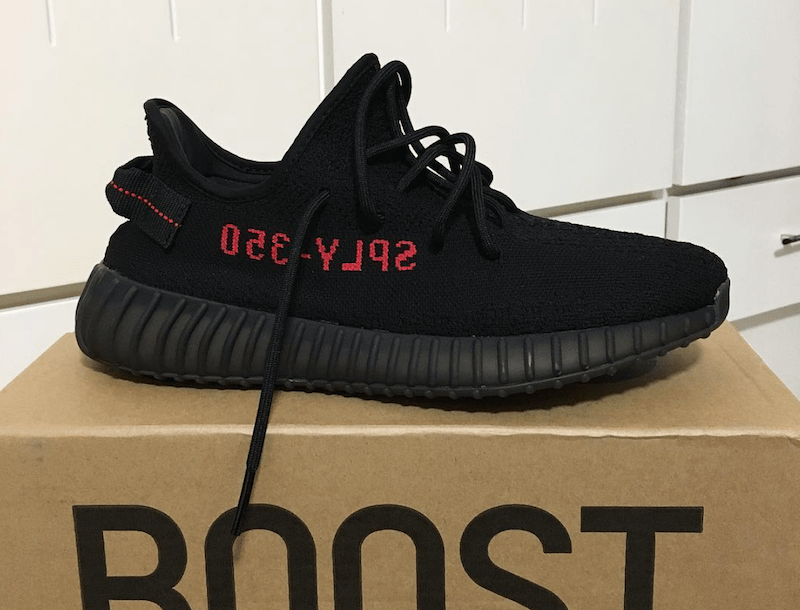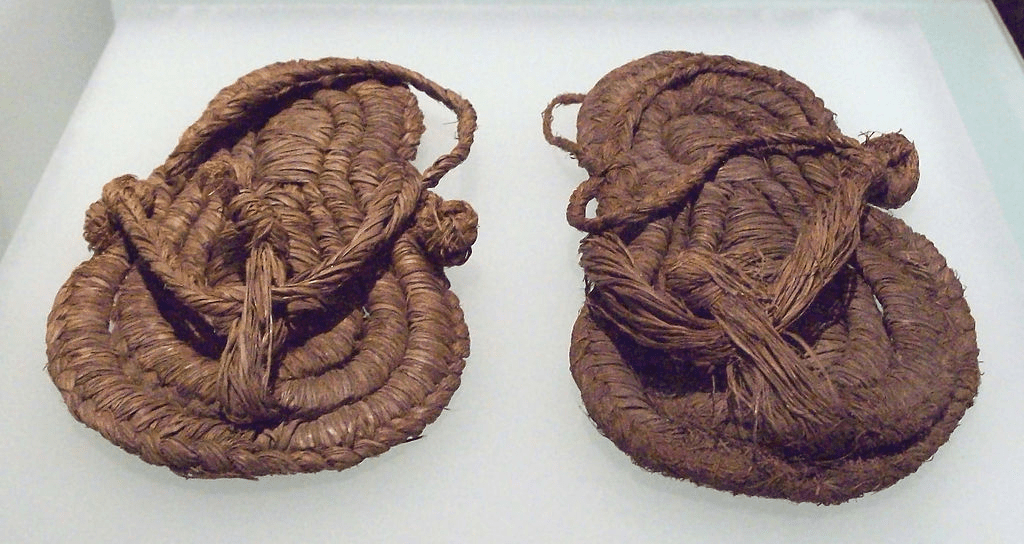Sneakers.co.id – Shoe, the accessories that currently cover your feet have a history 40.000 year. It's hard to imagine a time before the invention of shoes. However, what started as a practical venture has grown into a varied booming industry, just as with art as with functionality.
[lwptoc]
Even though all have basic characteristics, coloring, ingredients, and their designs have changed drastically over the thousands of years in the fascinating history of shoes.
Shoe History
From archaeological and paleoarcheological evidence, experts hypothesize that shoes were found around the Middle Paleolithic period around 40.000 last year. However, it was not until the Upper Paleolithic period that footwear was consistently worn by the population. The earliest prototypes were soft, made of leather cover, and resemble sandals or moccasins. Found in Fort Rock Cave in the US state of Oregon in 1938 guessed from around 7000-8000 SM, .
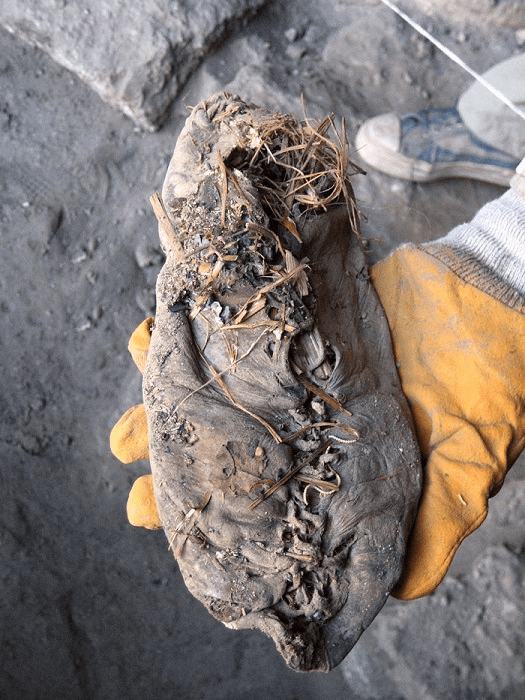
The oldest leather shoes in the world, made of a piece of cowhide tied with leather straps along the seams on the front and back, found in the Areni-1 cave complex in Armenia in 2008 and is believed to have come from 3500 SM. tzi Iceman shoes, from the year 3300 SM, featuring a brown bearskin pedestal, deerskin side panels, and rod-rope nets, which is pulled tight around the feet.
Jotunheimen shoes invented in August 2006. Archaeologists estimate that leather shoes were made between 1800 and 1100 SM, means to be the oldest item found in Scandinavia.
It is thought that it might have been used long before this, but because the materials used are very easily damaged, hard to find the earliest evidence of footwear.
The History of Shoes in Ancient Civilizations
This earliest design was very simple in design, often just “leg pouch” of leather to protect feet from rocks, debris, and cold. They are more often found in cold climates. Many early natives of North America used similar types of footwear, known as sandal shoes. These are tight shoes, soft-soled usually made of leather or bison leather. Many of the moccasins are also decorated with various beads and other jewelry. Moccasins are not designed to be waterproof, and in wet weather and warm summers, most Native Americans are barefoot.
Sandal Thong
When civilization begins to develop, sandal thong (precursor of the modern flip-flop) worn. This practice dates back to their photographs on ancient Egyptian murals from 4000 SM. One pair found in Europe is made of papyrus leaves and is approx 1.500 year. They were also worn in Jerusalem during the first century of the Common Era. Thong sandals are worn by many civilizations and are made of various materials. Ancient Egyptian sandals made of papyrus and palm leaves. In Africa, they make it from rawhide. In India they are made of wood. In China and Japan, straw used. The leaves of the sisal plant are used to make thread for sandals in South America while the natives of Mexico use the Yucca . plant.
While thong sandals are usually worn, many people in ancient times, like Egypt, Hindus and Greeks, saw little need for footwear, and most of the time, prefer to be barefoot. The Egyptians and Hindus made some use of ornamental footwear, like the soundless sandal known as “Cleopatra”, [reference?] Which does not provide practical protection for the feet. The ancient Greeks generally considered footwear to be self-indulgent, not aesthetic, and not necessary.
Ancient Greek
Shoes are mainly worn in theater, as a means of enhancing stature, and many prefer to go barefoot. Athletes in the Ancient Olympics participated barefoot – and naked.
Even gods and heroes are mainly depicted barefoot, hoplite warriors fought barefoot and Alexander the Great conquered his vast empire with barefoot soldiers. Ancient Greek runners are also believed to have walked barefoot. Pheidippides, first marathon runner, ran from Athens to Sparta in less than 36 jam. After the Battle of the Marathon, he immediately ran from the battlefield to Athens to inform the Athenians of the news.
Roman
Romans, who eventually conquered the Greeks and adopted many aspects of their culture, not adopting the Greek perception of footwear and clothing. Roman clothing seen as a sign of power, and footwear is seen as a necessity for living in a civilized world, although the slaves and the poor are usually barefoot. Roman soldiers ejected in chiral shoes (different left and right shoes).
The Middle Ages
The usual casual footwear in the Pyrenees during the Middle Ages was the espadrille. These are sandals with braided hemp sole and fabric upper, and often includes cloth straps that tie the ankles. The term is French and comes from the grass esparto. This shoe originated in the Catalonian region of Spain in the early 13th century, and is commonly used by farmers in farming communities in the area.
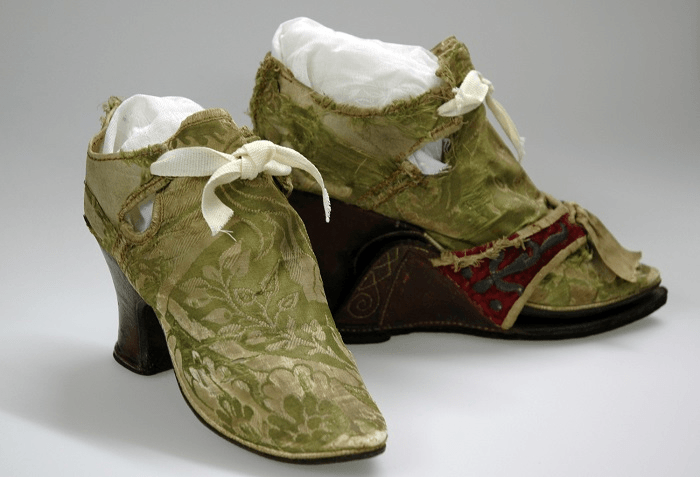
Many medieval shoes were made using the turnshoe method of construction, where the top is the side of the meat that turns out, and stick to the sole and joined to the edge by a seam. The shoe is then turned over so that the grain is outside. Some are developed with flaps or straps to tighten the skin around the foot for a better fit.
Medieval turnshoes that survive often fit perfectly to the feet, with the right and left shoes become a mirror image. Around 1500, the turnshoe method was largely replaced by the ron welted method (where the upper is sewn to a stiffer sole so it can't be turned out). The turnshoe method is still used for some dance shoes and special shoes.
Pattens Shoes Model
In the 15th century, pattens became popular with both men and women in Europe. It is usually seen as a precursor to the modern high heel model, while the poor and the lower class in Europe, as well as slaves in the New World, barefoot. In the 15th century, Crakow is in fashion in Europe. This style of shoe is named because it is thought to have originated in Kraków, Poland's capital. This style is characterized by the point of the shoe, which is known as “polaine”, which is often supported by whalebone tied to the knee to prevent entry points while walking. [23] Also during the 15th century, chopines invented in Turkey, and usually 7-8 inch (17,7-20,3 cm) tall.
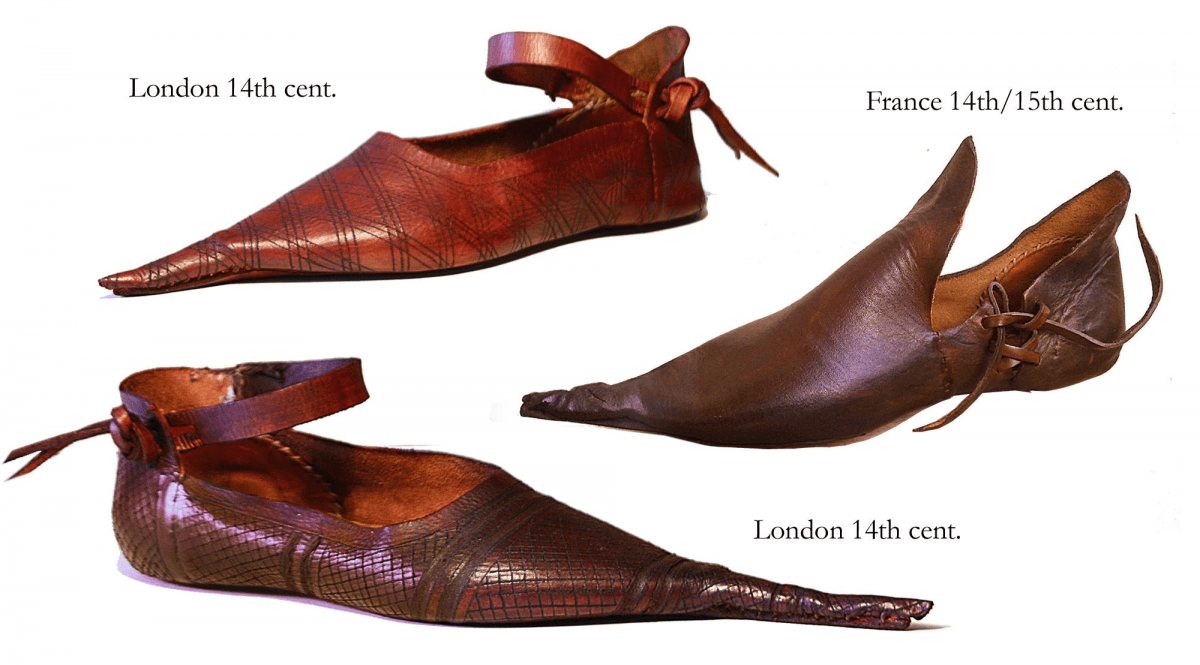
These shoes became popular in Venice and throughout Europe, as a status symbol that reveals wealth and social standing. During the 16th century, nobles started wearing high heels to make them look taller or bigger than life, like Catherine de Medici or Mary I of England. On 1580, even men wear it, and someone with authority or wealth is often referred to as, “well pocketed”. [22]
Era modern
Since the 17th century, mostly of leather and has used sewn soles. It remains the standard for better quality today. Until about 1800, shoes are generally made without differentiation for the left or right foot. Shoes like this are now referred to as “straights”. Only gradually did modern custom toe shoes become the standard.
Footwear production became more commercialized in the mid-18th century, because it is expanded as a cottage industry. Huge warehouses start storing footwear, made by many small factories from that area.
Until the 19th century, shoe making is a traditional craft, but at the end of the century, the process is almost completely mechanized, with the production that takes place in big factories. Despite the obvious economic advantages of mass production, the factory system produces shoes without the individual differentiation that traditional shoemakers can provide.
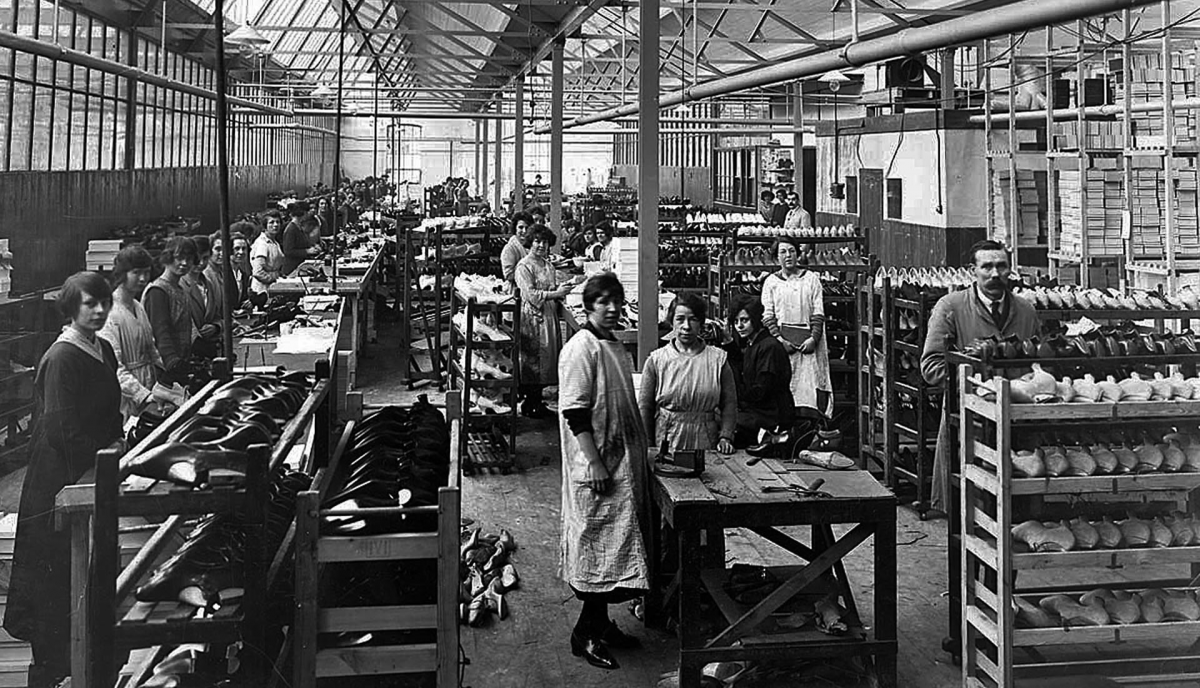
The first steps towards mechanization were taken during the Napoleonic Wars by engineers, Marc Brunel. He developed mass production boot machines for British Army soldiers.
In the year 1812 he devised a scheme for making a nail-making machine that automatically fastened the sole to the top using pins or metallic nails. With the support of the Duke of York, finally produced, and, because of strength, cheap, and durability, introduced for army use. In the same year, use of screws and staples patented by Richard Woodman.
In the early Baroque period of Europe, women's and men's shoes are very similar, although fashion and material differ among social classes. For ordinary people, thick black skin is the norm, and for the nobility, the same shape is made of wood.
Men's and Women's Shoe Models
In the early 1800s, for women and men finally began to differ from each other in style, color, heel, and foot shape. Types of footwear made of cloth appear in this era, and boots are becoming very popular. After a lot of fluctuation, the standard for a man's heels finally ends at 1 inch.
Until 1850, shoes made straight, it means there is no differentiation from the left and right. As the twentieth century approaches, manufacturers increase comfort by making special shoes for the feet.
Century 20
In the 20th century, the face of footwear has changed drastically from decade to decade. This is due in part to various technological advances that make the manufacturing process simpler.
During the Great Depression, black and brown dominate the American market. Not long after that, Oxfords are the popular choice of men with cork soles, platform shoes are growing popular among women.
Although men's footwear models remained relatively unchanged after World War II, women's footwear makes another dramatic change in their appearance. Models for women are now curvy, advanced, and made to accentuate the legs. Smooth heel gets narrower as the decades go on.
Century Shoe Model 20
As the presence of women in the workplace grew in the last decades of the 20th century, so are their rights. In the early seventies, platforms and wedges are very popular with women, although less popular anymore in the 80s and 90s.
Men's footwear trend, however, very static, because oxfords and shoes remain the dominant style. In the year 1986, Doc Martens, which was once touted as an anti-fashion statement, considered socially acceptable.
Shoes as a lifestyle
These days, There's a shoe for every occasion, mood, and preferences. There is also a movement away from style that focuses primarily on comfort and function, because many designers are shifting interest from practicality to aesthetics. Celebrities like Lady Gaga have introduced the world to footwear that is more artistic and armadillo than clothing.
Shoes also play an important role in the fairy tale Cinderella and The Red Shoes. In the film adaptation of the children's book The Wonderful Wizard of Oz, a pair of ruby red sandals plays a key role in the plot. Comedy of the year 1985 The Man with One Red Shoe featuring an eccentric man wearing one normal business shoe and one red shoe who is the center of the plot.
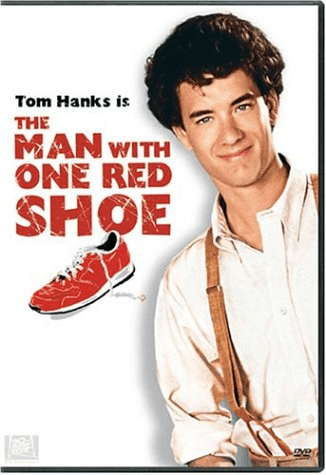
Sneakers
Collection sneakers has also existed as part of the urban subculture in the United States for decades. The last few decades have seen this trend spread to European countries such as the Czech Republic.
Sneakerhead is a person who has several pairs of sneakers as a form of collection and fashion. Contributing to the growth of sneaker collectors is the worldwide popularity of the Air Jordan line designed by Nike for basketball stars Michael Jordan.
The most popping up sneakers 1876 in the United Kingdom, when the New Liverpool Rubber Company made plimsolls, or sandshoes, designed for croquette. Similar sneakers were made in 1892 in the United States by Humphrey O'Sullivan, based on Charles Goodyear's technology.
The United States Rubber Company was founded in the same year and manufactures sneakers and heels under various brand names, which was later consolidated in 1916 by the name, Keds.
Known as, “sneakers”, because the rubber sole allows the wearer to slip into other people. In the year 1964, The founding of Nike by Phil Knight and Bill Bowerman of the University of Oregon introduced many new improvements common to modern running shoes, like waffle rubber sole, breathable nylon top, and cushioning in the middle and heel.
During the 1970s, podiatrist expertise is also important in design running shoes and athletic shoes, to implement new design features based on how the foot reacts to certain actions, like running, jump, or side to side movement. Athletic shoes for women are also designed for their specific physiological differences.
